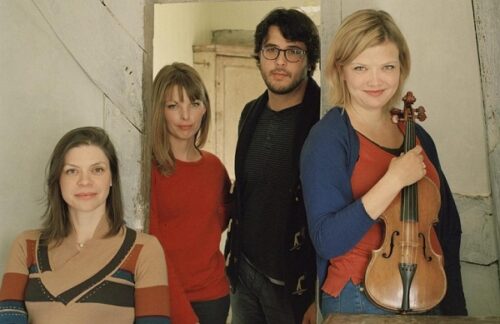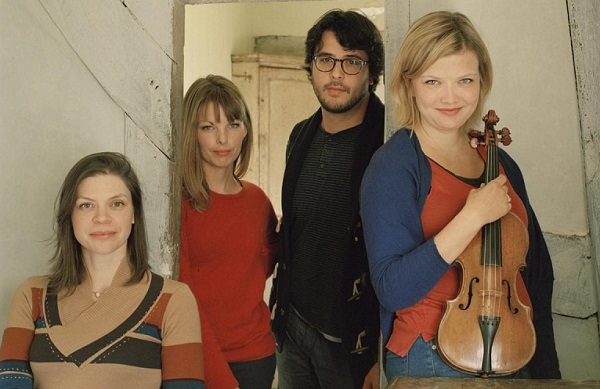 United Kingdom Purcell, Haydn, Beethoven: Chiaroscuro Quartet (Alina Ibragimova, Pablo Hernan Benedi [violin], Emilie Hornlund [viola], Claire Thirion [cello]). Turner Sims, Southampton, 4.6.2023. (CK)
United Kingdom Purcell, Haydn, Beethoven: Chiaroscuro Quartet (Alina Ibragimova, Pablo Hernan Benedi [violin], Emilie Hornlund [viola], Claire Thirion [cello]). Turner Sims, Southampton, 4.6.2023. (CK)

Purcell – Fantasias a 4 in C minor, D minor, G major
Haydn – Quartet in D, Op.33 No.6
Beethoven – Quartet No.11 in F minor, Op.95 ‘Serioso’
It was good to welcome back Associate Artists the Chiaroscuro Quartet to the Turner Sims, in a programme of Purcell, Haydn and Beethoven. Alina Ibragimova, their leader, is a fine artist, hardworking, versatile and undemonstrative: I last saw her, partnered by pianist Cédric Tiberghien, in a recital of late-nineteenth century French music. The Chiaroscuro’s music-making is informed by historical practice – playing on gut strings, they produce a clean, vibrato-less, beautiful sound that consistently stimulates the ear: wonderfully suited, as was immediately apparent, to the music of Purcell.
They opened the concert with three of Purcell’s nine Fantasias for four viols, written when he was twenty-one. Purcell wrote Fantasias for other combinations, but in this context it was tempting to hear them as proto-string quartets, rather than as a late, great homage to the older tradition of English consort music. Purcell was a busy court composer, writing for specific public occasions: uniquely, in these instrumental works, he seems to have composed for his own pleasure and, presumably, that of his friends – an anticipation of the purpose of chamber music.
Purcell had no successors. We are astonished, as we are with Mozart and Schubert, that such a short life should have yielded so much great music; and we may ponder what he might have written had he lived on into the eighteenth century, into the era of Handel. Listening to these Fantasias, so beautifully played by the Chiaroscuros, it was hard to avoid a poignant sense of what has been lost.
In the last of Haydn’s Op.33 ‘Russian’ Quartets, the vibrancy of playing from the Chiaroscuros and their unanimity of attack made the engaging opening movement bracing rather than merely genial. Ibragimova made the most of her beautiful melody, accompanied discreetly by the other instruments, at the centre of the plangent Andante; as did Claire Thirion in her bluff, good-humoured cello solo in the Trio of the ensuing Scherzo. The finale’s major and minor sections were kept in well-behaved balance, their alternations doing nothing to disturb the music’s essential calm.
After the interval, a riveting performance of Beethoven’s F minor Quartet: torment and tenderness, a critic has written of the first movement, but during the tender passages we are always braced for the next explosion of dark energy. Even more striking is the work’s compression: the movement lasts under five minutes. In the Allegretto, the cello leads us down into the dark: and for all the wan beauty of much of the movement, there is a chill that it can never shake off. The Scherzo is of course a dance, but a grim, harsh one, from which the Trio offers only temporary relief. All this the Chiaroscuros projected with maximum vividness: so also the restless, seemingly undirected energies of the finale. The unexpected ending, arriving from nowhere, felt more agitated than jubilant.
By the clock, this was a short concert: under an hour’s music (excluding the Mendelssohn encore). Yet it did not feel so. Beethoven’s Op.95, in its terseness and compression, taxes the listener as the late quartets do. You cannot relax or switch off while the Chiaroscuros are playing, they demand, and reward, keen attention and close focus. I do not imagine that anyone left the Turner Sims that evening feeling short-changed.
Chris Kettle
